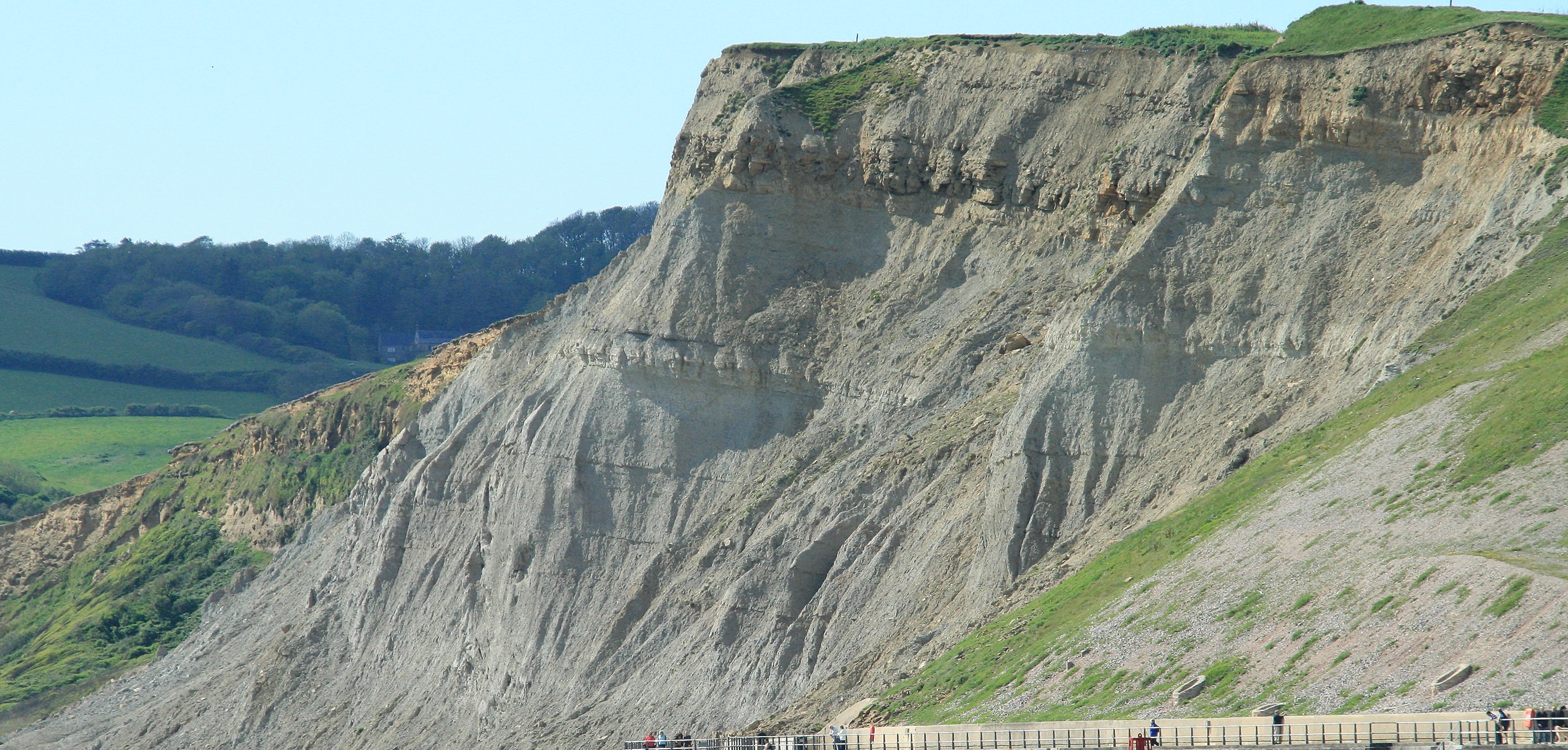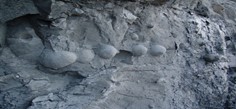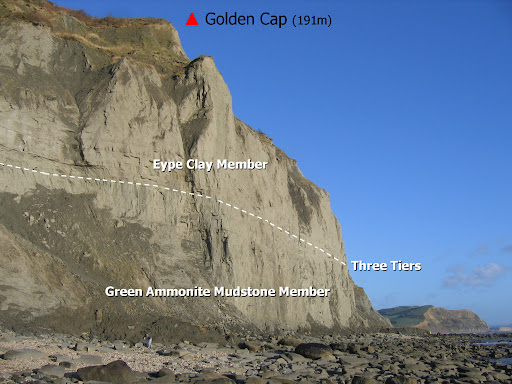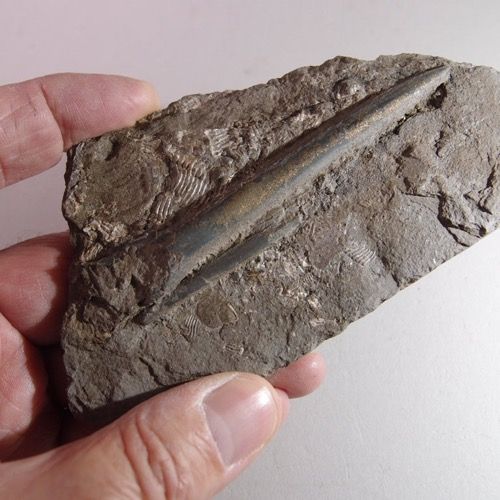
Beyond Eype Mouth

 |
West Bay Geology
Beyond Eype Mouth |
 |
Within the rocks under Thorncombe there are two notable and named geological beds. At the base of the cliff in the Grey clays there is a level marked out by a near horizontal set of nodules. This is called (not surprisingly) the Eype Nodule Bed. If you can find the bed, it is often covered by beach sand or by landslips, it can be a good place to find fossils. The fossils can be found within the nodules. In this case the nodules are formed around the site where an ancient marine creature died, and in the formation of a fossil the nodules have been formed.

Slightly higher up at the transition between Eype Clay and the Down Cliff Sands is another layer called the Starfish Bed, which has in the past been a good source of museum quality starfish specimens. Unfortunately I have not found a place where this bed is easily accessible from the beach. Perhaps one day I might be brave and put on my hard hat and take a small walk up the cliffs to find this bed. The starfish bed can be traced across the area, and an equivalent layer also exists in Yorkshire cliffs. Beds such as this, with particular fossils, are of great use in establishing and dating geological rocks across larger areas.

On fine days when we able to row around Thorncombe towards Seatown and beyond you can see an interesting feature in the cliffs called the Three Tiers. For once this is a rock formation name that describes exactly what it look like. The Three Tiers are three darker and harder bands of rock that are found at the base of the Eype Clay, and which form the boundary with the lower (and older) Green Ammonite Beds which are the main rock formation seen around Charmouth. These three hard bands stand out from the grey clays and form a distinctive triple line along the cliffs. There are some lovely ammonites to be found inside of these harder Three Tiers rocks, and many specimens of large smooth ammonites, and indeed a few decorative doorstops in local houses, come from this bed. I have not been able to find a good picture of the Three Tiers, the picture below showing the line of the beds but not the tiers themselves very well. I will try and do this next time I find myself on a gig that gets itself (weather permitting) as far down the coast as Seatown.

Moving further West is getting into the realms of the Annual Row to Lyme, but in brief the cliffs underneath Golden Cap and on to Lyme display the oldest of the Jurassic rocks, in increasing order of age Belemnite Marls (a Belemnite is a close relation of the Ammonites, (and one that is sadly completely overshadowed by its more recognised relative), Black Ven Shales (which are black) and then Blue Lias (not really blue!) and White Lias (not really white!) Limestones. But, as I say, these are all firmly in the rowing territory of Lyme Gig club and not Bridport!
Anyway, to finish this section, let's have a lovely picture of a Belemnite rather than yet another boring Ammonite!.

Next Section - Further Afield
Previous Section - West of the Harbour
Back to Introduction